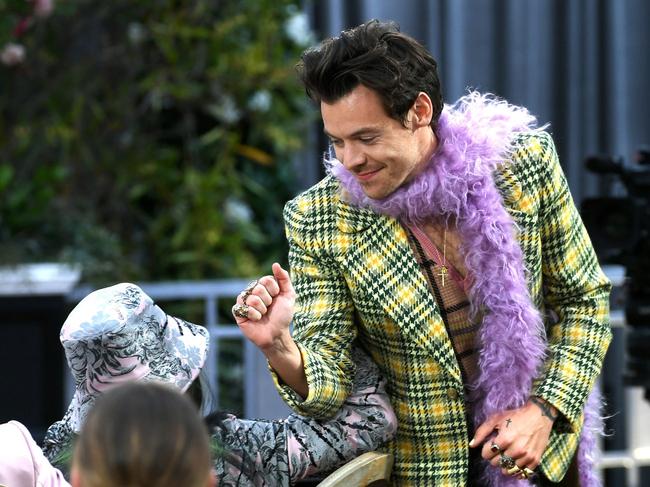Men with pearl necklaces and earrings or women with oversized hooded shirts: these are now familiar images. It seems like there are no more gender boundaries in fashion. But it is not that simple.
By Steffen Edlinger
The Hessian fashion label "Kleinigkeit" from Hofheim am Taunus (Main-Taunus) is actually much bigger than the name suggests: the label now has around 20 employees. It focuses primarily on young fashion, and "Kleinigkeit" is also present at the Frankfurt Fashion Week (July 5th to 9th).
Max Schubert works in marketing and sales. He has noticed that there is a trend towards unisex and fashion far removed from gender constructions - also fueled by actors and singers like Brad Pitt or Harry Styles, who have their picture taken in women's clothes for the covers of glossy magazines.
"This whole open approach definitely leaves room for the parts to be worn as you wish, regardless of gender," says Schubert. "And if you convey it well, everything can always look very good."
Differences in cut, less in color and motif
Schubert used to work in the men's department of a fashion store. It was almost the order of the day there that women came to him who were consciously looking for T-shirts with male patterns. "Many women just like it a little looser," explains the 30-year-old.
The label "Kleinigkeit" produces fashion that is separated by gender. But a lot has changed here too. "The parts differ mainly in the cuts," says Max: "I leave that aside when it comes to colors, everyone can choose that for themselves. The man can wear yellow, the woman can wear yellow or whatever. It doesn't matter!" Especially when it comes to motifs or designs, there is not always a distinction between women's and men's fashion.

Gender boundaries questioned
21-year-old Jacob Rott from near Friedberg (Wetterau) has noticed that gender boundaries are being overcome in fashion. He is a model and content creator. Almost 250,000 people follow him on Instagram, attracted by the many photos and videos in which he shows himself in traditionally male-read outfits and poses.
But he's also gotten used to shootings in outfits that question gender boundaries. "Two years ago I would have thought: Huh ?! But it's completely okay," he says about a shoot in a mesh shirt on a flower meadow.
Privately he is still feeling his way. That's why the pink baseball cap stayed in the store when I was shopping with my roommate the other day. But he confidently wears the necklace with the pearl that looks like a smiley face. "I don't think there's this gender divide in fashion anymore," says Rott. And he finds that "cool and casual".
Fashion "marks" gender - but not clearly
In general, fashion is first and foremost a form of expression to "mark" one's own gender," explains Denise Bergold-Caldwell, scientific officer at the Center for Gender Studies and feminist future research at the University of Marburg. For example, there are different codes for clothing that can mark gender.
But these markings are also not clear and culturally different. "The kilt, for example, is clearly worn by men," explains Bergold-Caldwell: "In this case, skirts are also coded as male."
Drawing attention to diversity
"Cross dressing" is also exciting in this context - that women or men consciously put on clothes that are more likely to be assigned to the opposite sex.
The main thing here is to overcome gender barriers and also to draw attention to the issue of gender diversity. After all, clothing does not indicate which gender a person is assigned to.
Demand for separate fashion still standard
Max Schubert from the "Kleinigkeit" fashion label also thinks it's a good thing that society is becoming more and more open and that the younger generation in particular is paying less and less attention to gender boundaries: "It's all about that we can all live coolly together," he says. But why does "Kleinigkeit" still produce fashion that is tailored to either the female or the male sex?
This is mainly due to the fact that the general public and retailers think in terms of fashion in terms of women's and men's departments. The demand for gender-specific fashion is still very high and the standard. "But that doesn't stop anyone from grabbing a part from the other department anyway."
Further information End of further informationSource: hessenschau.de/Sonja Fouraté











Digital outfit of the week: Thumby...
Helene Fischer: 11 hit star outfits...
Fashion is increasingly breaking do...
KUMMER criticizes the brand mania i...